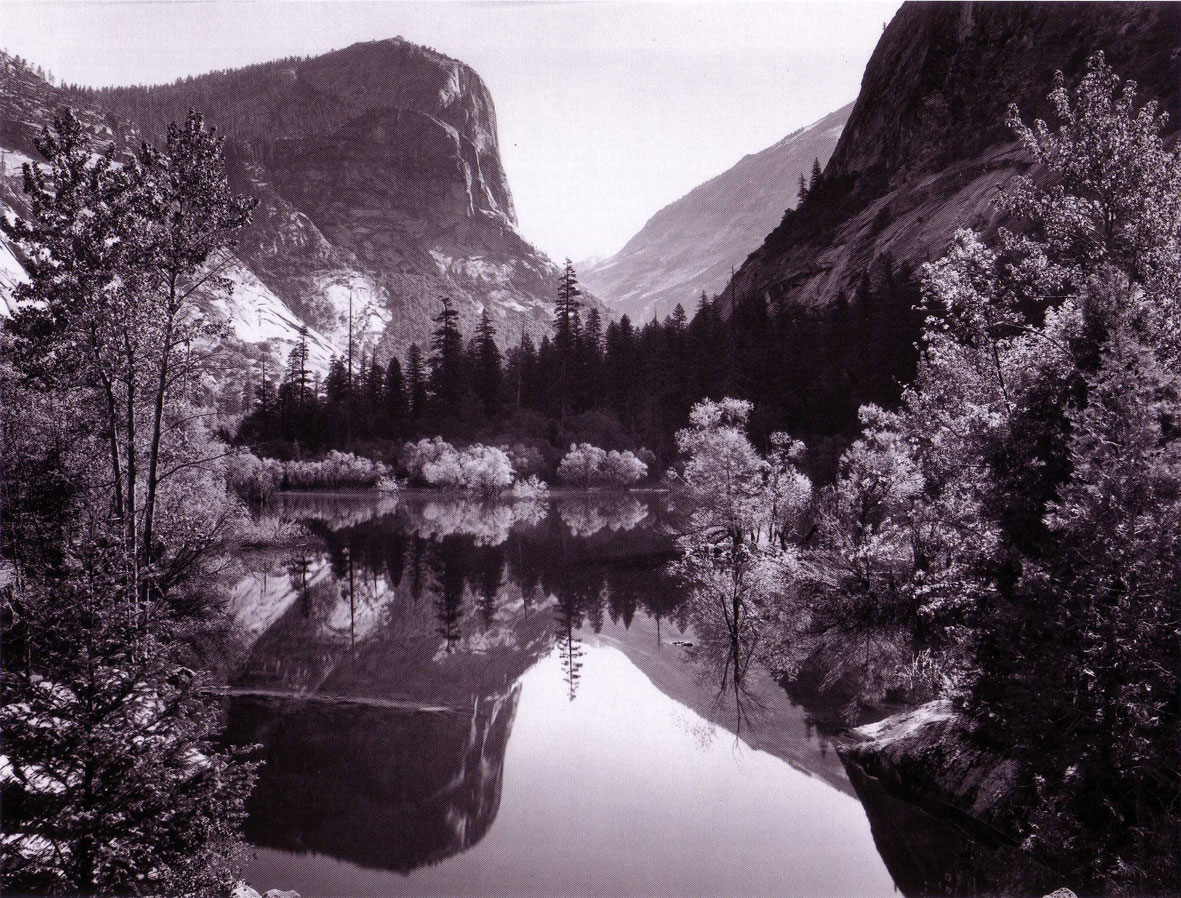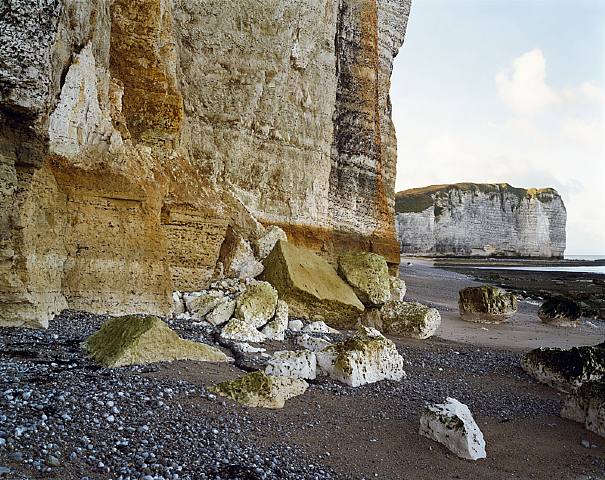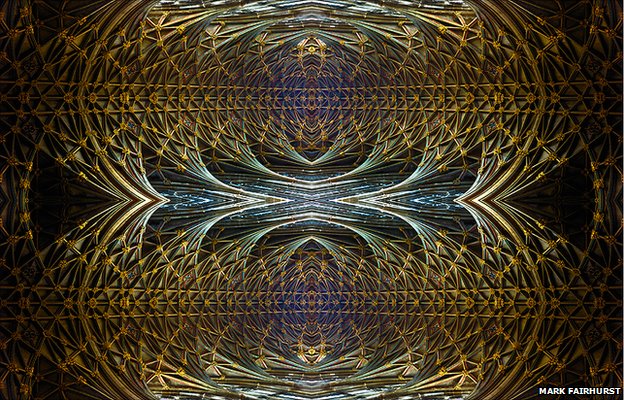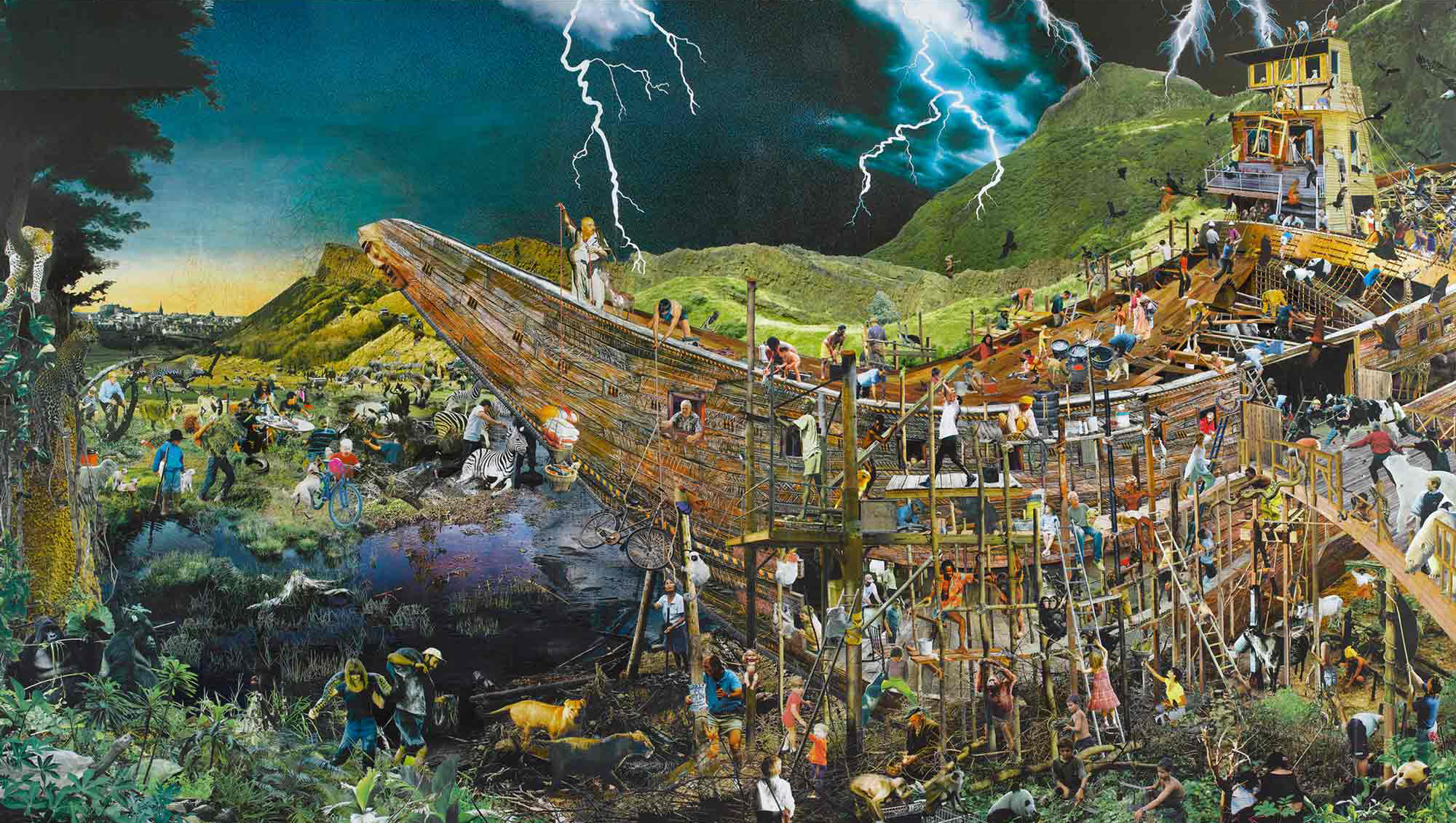In a display of over 100 original prints, the National Maritime Museum presents Ansel Adams: Photography from the Mountains to the Sea. From muffled, vaporous clouds to sharp plumes of waterfall or geyser, water is the theme for an exhibition that celebrates the formal lyricism of Adams’ inspiring photographs. There are striking images of the curl of foam and ripple as the sea skims shores of dark sand, including a series of Surf Sequence (1940) frames on the beach at San Mateo (County Coast, California). There are expansive views of the rugged mountains and crisp snow-lined valleys of Yosemite National Park and Grand Teton National Park. There are also intricate textured details in photographs of seaweed, ice and floating grasses.
Given such a homogenising theme, it can seem unnecessary, even impossible, to move beyond the magnetism of such technically accomplished photographs: Adams undoubtedly has, and is widely celebrated for, a style with articulate and refined compositions, dramatic contrasts and an all-pervading sharpness of focus. When he formed, along with six others, Group f/64 in 1932, it was to promote photography that celebrated the camera’s clear vision, needing no other introduction. Yet, for Adams, it was also a way of seeing that suggested the immediacy of nature, along with the unhindered capacity of the mind’s eye to be a part of this immediacy.
Adams’ work presents the apparent contradiction of an isolated inhuman perspective on the world with that of complete absorption and identification with(in) it. Enlarging on his friend and colleague Alfred Stieglitz’s well-known term ‘equivalent’, Adams thought that his photographs presented not just a view, but an equivalent in terms of the emotions he felt at the time. He said that “a great photograph is one that fully expresses what one feels, in the deepest sense, about what is being photographed.” As well as emotional meaning, his work has also become resonant with spiritual meaning, one concerned with our connectedness to the land and environment. In the early 1920s, Adams is known to have converted to Edward Carpenter’s monism, celebrating the wholeness of the universe, where for Adams, nature in its entirety was “the vast expression of ideas within the Cosmic mind”. Later in life, Adams’ assistant of nearly 10 years said of his work, it is “a kind of visual [John] Muir, a symbol of conscience, of reverence, of caring for the land.”
If the photographs themselves are only implicitly cosmological, rather than explicitly so, it is because Adams is always intuitively engaged with picturing what he calls ‘configurations’, not ‘integrations’. He does not seek to impose on the image, but rather to find a synthesis, an extraction from/of nature, in which he himself is implicated. There is, in the varied sizes of his prints from the 6-foot murals for The American Trust Company to the 6-inch enamel-like jewels of the Merced River, a sense of corporeal engagement with the image. Adams famously described the printing process as being like that of the performance of a piece of music, of which the score was the negative. Such an attentive position bears out his precise articulation of a holistic, embracing vision, which owes more to a spiritual conception of beauty than the aesthetic conception more readily expounded in the ‘purist’ canon of photographic history.
Quotes from: the Exhibition Guide; Anne Hammond, “Ansel Adams and Georgia O’Keeffe: On the Intangible in Art and Nature,” History of Photography, Vol. 32, No. 4, Winter 2008, p.307; Andrea G. Stillman (ed.), Ansel Adams: 400 Photographs (New York & London: Little, Brown and Company, 2007), p.9; and terms used by Adams in the exhibition’s films – two short interview excerpts from: BBC Masters: Ansel Adams, 1983 (dir. Peter Adams), and Ansel Adams: A Documentary Film, 2002 (dir. Ric Burns).
Header image: Mirror Lake, 1935, by Ansel Adams.



